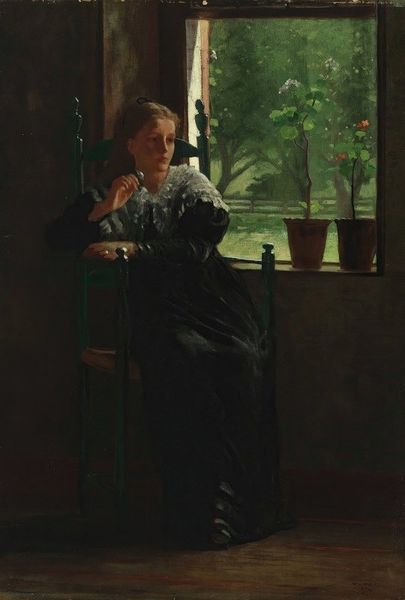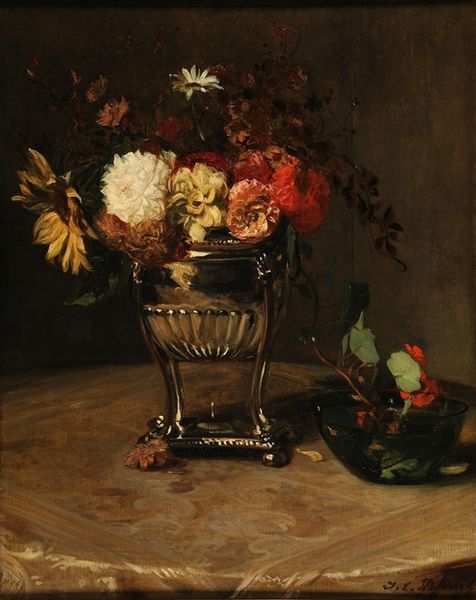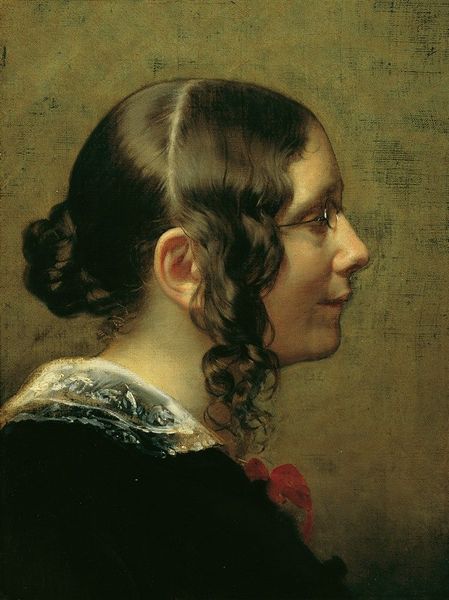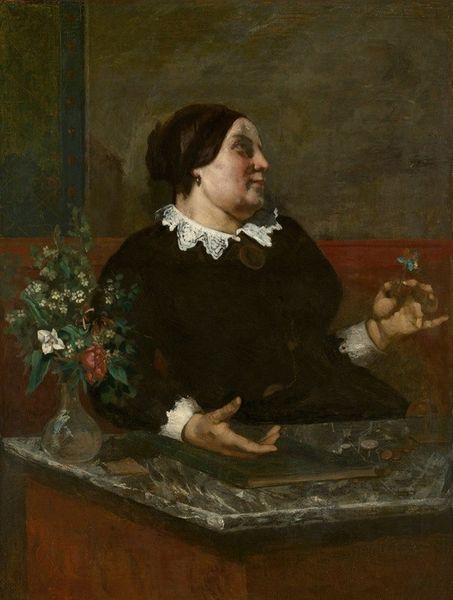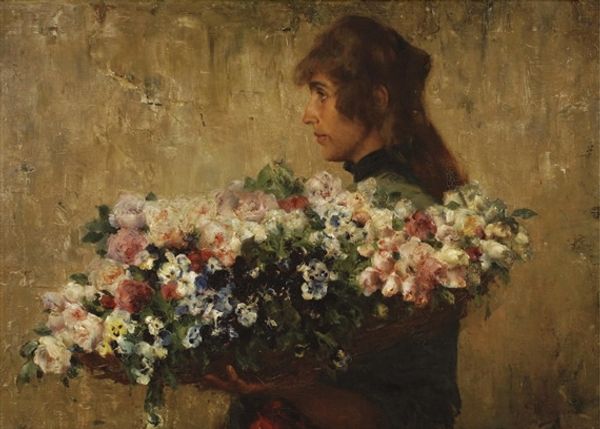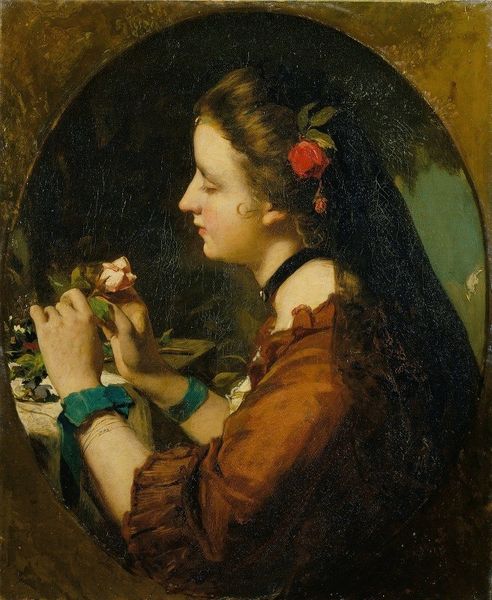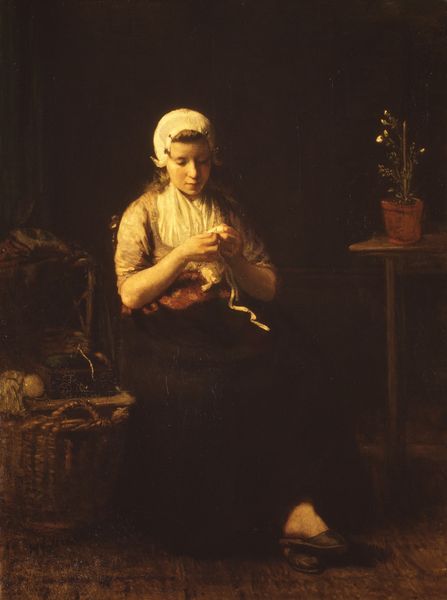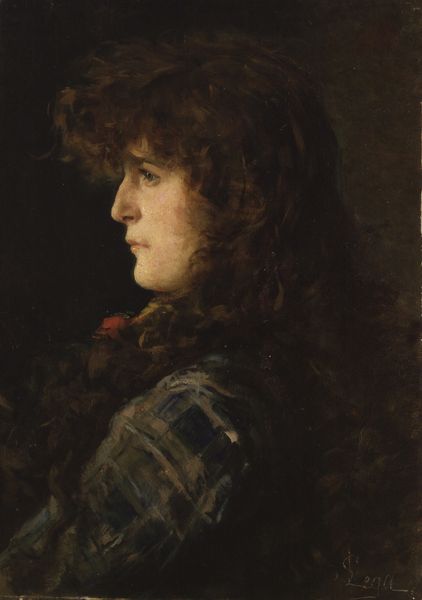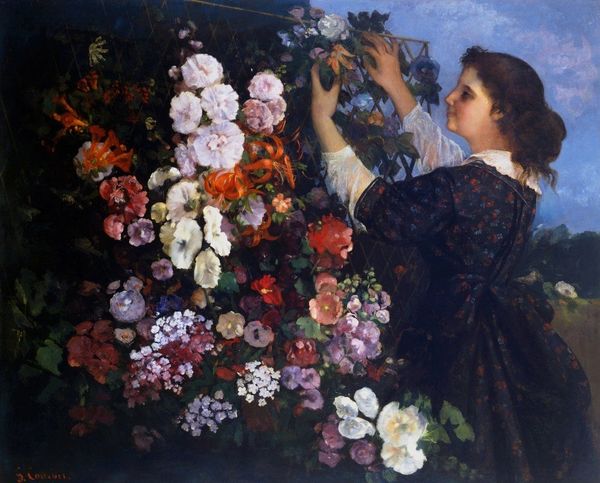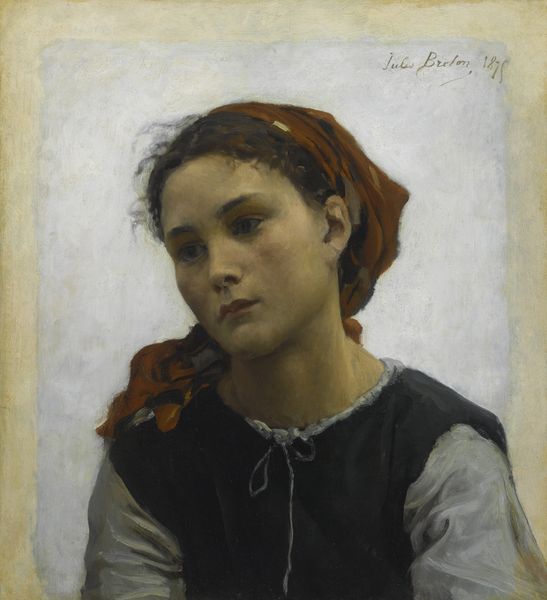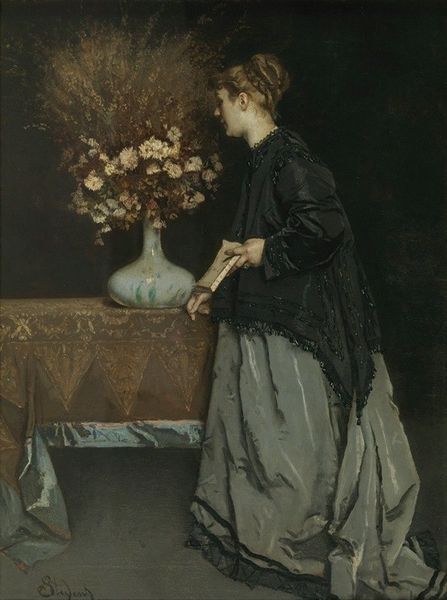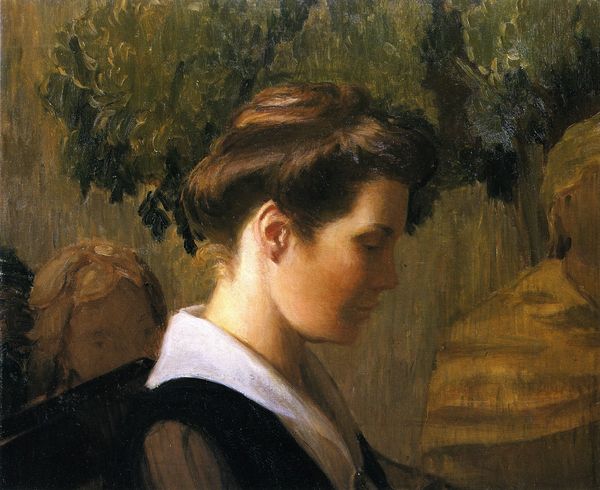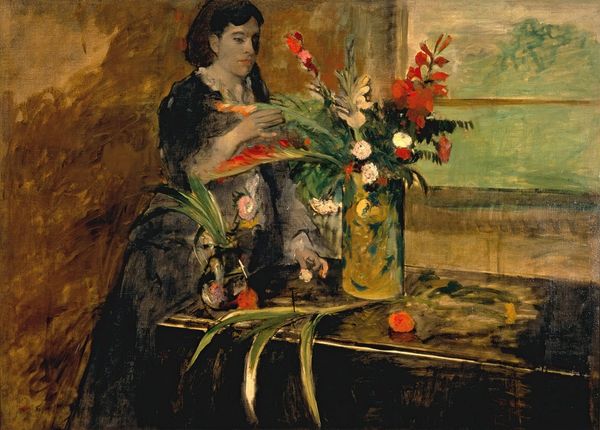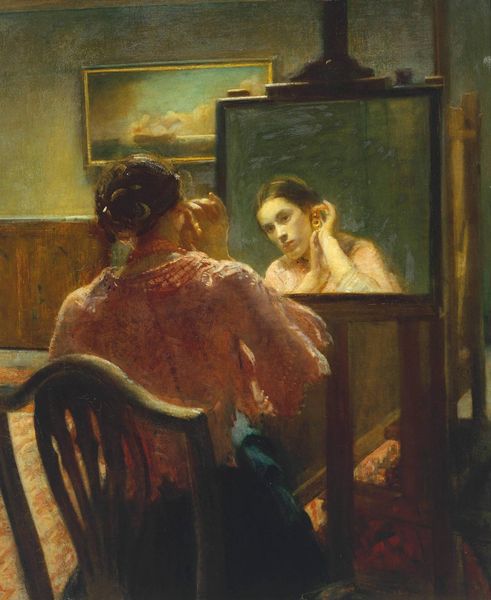
Copyright: Public Domain: Artvee
Editor: Here we have Hans Thoma's "Agathe Thoma, die Schwester des Künstlers" from 1868. It seems like a simple portrait, yet the focus on Agathe arranging flowers makes me wonder about the symbolic importance of the materials used, not only the paint, but what it represents. What's your take on it? Curator: Focusing on materiality here opens up some interesting avenues. Consider the act of painting itself in 1868: pigment creation, canvas preparation, the brushstrokes—these are all acts of labor. Furthermore, the sitter arranges blooms. What do the means and processes of "flower arrangement" suggest? It reflects the burgeoning middle class, and their desire to emulate the customs and styles of aristocracy through a careful engagement with the materials available to them. Editor: So you're saying that the image, down to the types of paint, brush and the subject are materials that point to socioeconomic class, that it may be the heart of this piece? Curator: Precisely. Note the vase; is that porcelain, delftware? Its provenance would further refine our understanding. Even Agathe's clothing suggests a certain austerity. Thoma isn't merely painting his sister, he’s representing a particular moment in social and economic transition. It isn't the finished painting we need consider. Rather, let us consider how the materiality of this portrait can expose complex histories of labor and consumption. Editor: That’s fascinating! I hadn't thought about the art making processes in that much detail. Considering the materiality of everything in the image does give a completely new depth. Curator: Exactly, by acknowledging art as physical labor within economic and historical circumstances, it can grant us a stronger and sharper understanding of art itself!
Comments
No comments
Be the first to comment and join the conversation on the ultimate creative platform.
